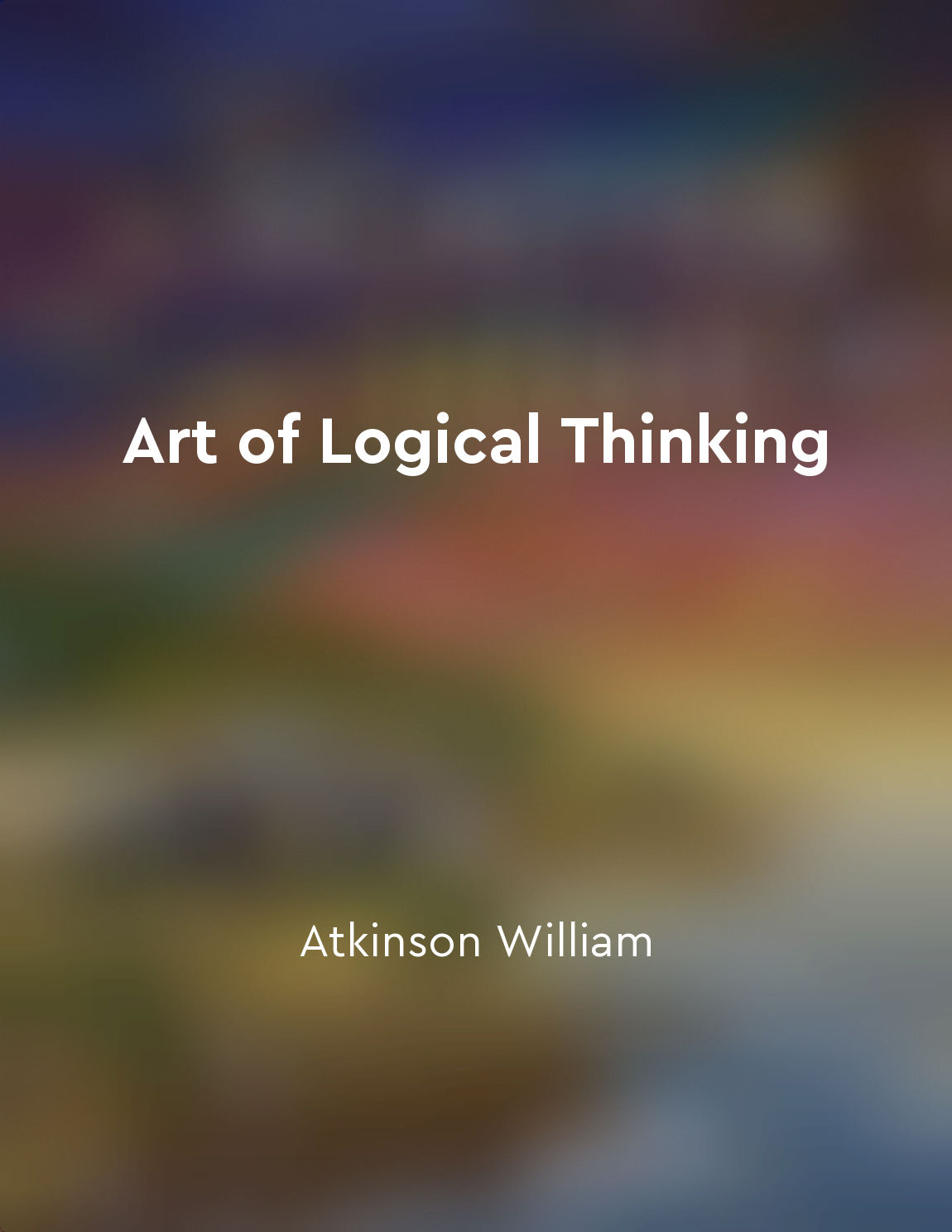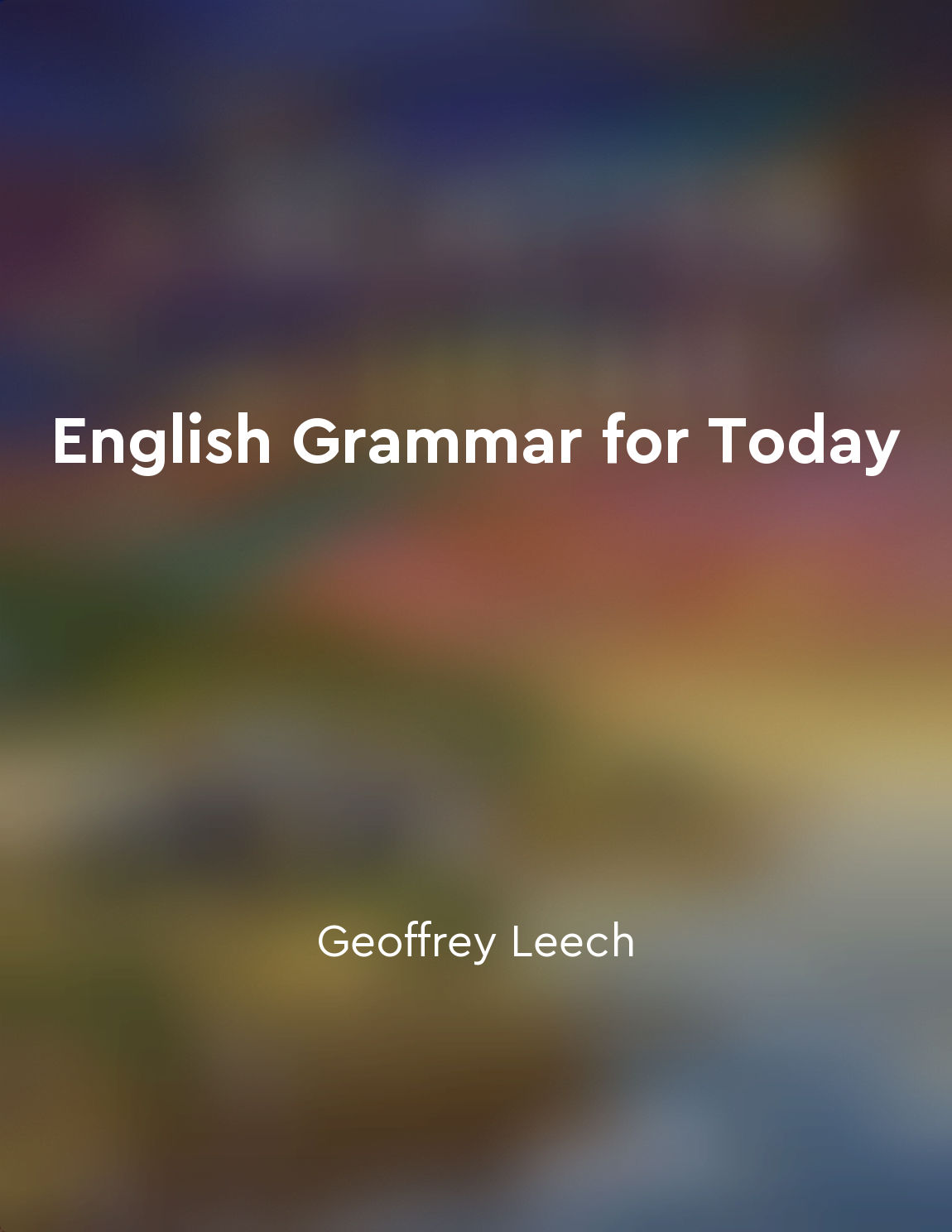Conjunctions connect ideas within sentences from "summary" of English Grammar for Today by Geoffrey Leech,Margaret Deuchar,Robert Hoogenraad
Conjunctions are words that connect ideas within sentences, allowing for a smooth flow of information and logical progression of thought. By linking clauses and phrases together, conjunctions help to create coherence and cohesion in writing. They serve as bridges that guide the reader from one idea to the next, ensuring that the relationship between different parts of a sentence is clear and easy to follow. There are different types of conjunctions that serve various functions in connecting ideas. Coordinating conjunctions, such as 'and', 'but', and 'or', join elements of equal importance within a sentence. Subordinating conjunctions, on the other hand, establish a relationship of dependence between clauses, with one clause being subordinate to the other. Examples of subordinating conjunctions include 'because', 'although', and 'while'. Conjunctions play a crucial role in structuring sentences and organizing information in a coherent manner. They help to establish relationships between ideas, indicating whether one idea is adding to, contrasting with, or supporting another. By using conjunctions effectively, writers can create clear, well-structured sentences that convey their intended meaning accurately and effectively. In addition to linking ideas within sentences, conjunctions also contribute to the overall flow and rhythm of a piece of writing. By connecting clauses and phrases, conjunctions help to maintain a smooth and consistent pace, guiding the reader through the text without interruptions or abrupt shifts in focus. This ensures that the writing is engaging and easy to follow, enhancing reader engagement and comprehension.- Conjunctions are essential tools for connecting ideas within sentences and creating coherence in writing. By using conjunctions appropriately and effectively, writers can ensure that their sentences are well-structured, logical, and easy to follow. This, in turn, helps to communicate ideas clearly and accurately, making the writing more engaging and impactful for the reader.
Similar Posts
Continuously improve your communication skills to enrich your life
Communication is an essential skill that impacts every aspect of our lives. From our relationships with others to our professio...
Vocabulary elements are building blocks of language learning
The concept that vocabulary elements are building blocks of language learning is fundamental to understanding how we acquire an...
Be authentic and genuine in your delivery
Being authentic and genuine in your delivery is crucial when it comes to public speaking. This means being true to yourself and...
Nonverbal communication plays a significant role
Nonverbal communication is a powerful tool that can greatly influence the effectiveness of one's communication. It consists of ...

Invalid arguments contain logical errors
Invalid arguments, by their very nature, are riddled with logical errors that render them ineffective in persuading others. The...
Nonverbal cues can convey messages
Nonverbal cues play a significant role in communication, allowing individuals to convey messages without the use of words. Thes...
Understanding context aids in comprehension
Understanding context aids in comprehension. Context refers to the circumstances that form the setting for an event, statement,...

The art of storytelling in essays
Storytelling is an essential element of crafting impactful essays. It involves weaving together a narrative that captivates the...
Understanding sentence structure is key
Understanding sentence structure is key to effective communication in English. It is essential to grasp the rules and conventio...
Cohesive paragraphs stay focused on the main idea
Cohesive paragraphs are essential in effective writing because they help maintain the reader's focus on the main idea of the te...


